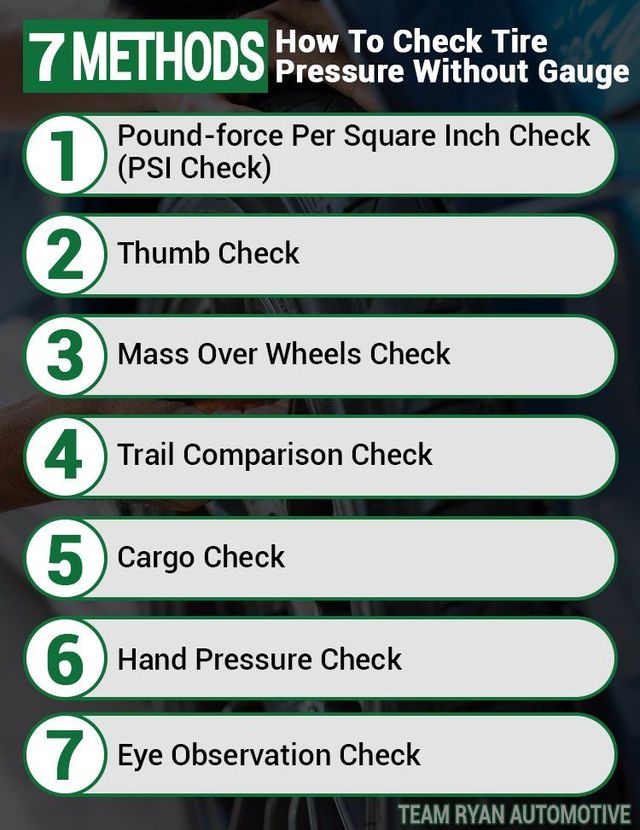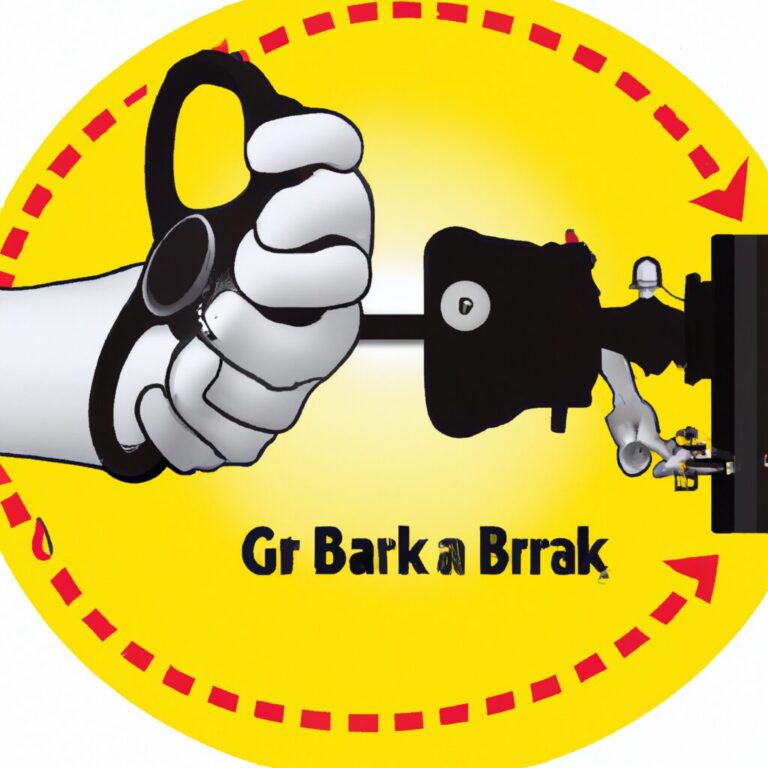How to Check Oil Pressure Without Gauge
To check oil pressure without a gauge, start by inspecting the dashboard warning light. Then listen for any unusual engine noises indicating potential low oil pressure.
Ensuring proper engine function and longevity requires monitoring oil pressure regularly. By following simple troubleshooting steps, you can prevent costly damage to your vehicle. Whether you drive for leisure or rely on your vehicle for work, maintaining optimal oil pressure is essential for smooth operation.
Being proactive in oil pressure checks can save you from major engine malfunctions and ensure safe travels on the road. Remember, a little vigilance goes a long way in preserving your vehicle’s performance and longevity.

Credit: www.teamryanautomotive.com
Common Signs Of Low Oil Pressure
Understanding the common signs of low oil pressure is crucial in ensuring the health and longevity of your vehicle’s engine. Being able to identify these signs can help you catch potential problems early on and save you from costly repairs. In this section, we will explore two common signs of low oil pressure: dashboard warning lights and abnormal engine noises.
Dashboard Warning Lights
One of the easiest ways to detect low oil pressure is through the dashboard warning lights. These lights are designed to alert you when there is an issue with your vehicle that requires immediate attention. When it comes to low oil pressure, the oil pressure light, which usually looks like an oil can, will illuminate on your dashboard. This light indicates that the oil pressure in your engine is below the recommended level.
Abnormal Engine Noises
Another common sign of low oil pressure is the presence of abnormal engine noises. When your engine lacks proper lubrication due to low oil pressure, the metal components can rub against each other, creating a harsh grinding or knocking sound. These noises can vary based on the severity of the oil pressure issue, but they are often loud and unmistakable. If you hear these abnormal engine noises, it’s crucial to address the issue promptly to avoid further damage.

Credit: www.youtube.com
Manual Oil Pressure Check
Ensure your car is on level ground and turn off the engine. Remove the oil cap and use a dipstick instead to check the oil level. Start the engine and look for any drops in oil pressure. If the pressure gauge doesn’t move, you may have a problem.
Performing a manual oil pressure check is a simple yet essential procedure to ensure your vehicle’s engine is running smoothly. By following the steps below, you can accurately determine your oil pressure without the need for a gauge.
Locating The Oil Pressure Sending Unit
1. Locate the oil pressure sending unit on your vehicle’s engine, usually found near the oil filter or the cylinder head.
2. Identify a small sensor with a wire connected to it, which is responsible for sending oil pressure readings to the gauge in the dashboard.
Using An Oil Pressure Test Kit
1. Obtain an oil pressure test kit from your local auto parts store or online retailer.
2. Connect the gauge from the test kit to the oil pressure sending unit on your engine.
3. Start the engine and let it run until it reaches normal operating temperature.
4. Observe the oil pressure reading on the gauge to determine if it falls within the manufacturer’s recommended specifications.
5. Turn off the engine and disconnect the test kit once the test is complete.
Alternative Methods For Checking Oil Pressure
Alternative Methods for Checking Oil Pressure
Oil Pressure Check Valve
To check oil pressure without gauge, using an oil pressure check valve is a reliable method.
Insert the check valve into the engine’s oil pressure port and start the engine to measure pressure accurately.
Ensure the engine is running at operating temperature for the most precise reading.
Using Oil Pressure Sending Unit Socket
Another effective method is using an oil pressure sending unit socket to check oil pressure.
Detach the oil pressure sending unit and replace it with the socket to monitor pressure directly.
Final Tips And Precautions
When it comes to checking oil pressure without a gauge, there are a few final tips and precautions to keep in mind. These simple steps can help ensure that you accurately assess the oil pressure in your vehicle, even if you don’t have a dedicated gauge to rely on. Let’s take a closer look at the importance of regular oil changes and the benefits of consulting a professional mechanic.
Regular Oil Changes
One of the most crucial aspects of maintaining proper oil pressure is ensuring that you adhere to a regular oil change schedule. Regular oil changes not only help to keep your engine lubricated and functioning properly but also provide an opportunity to assess the overall health of your vehicle. By changing the oil at the recommended intervals, you minimize the risk of oil sludge buildup and maintain optimal oil pressure levels.
Consulting A Professional Mechanic
Sometimes, it’s necessary to consult a professional mechanic to accurately assess oil pressure without a gauge. A mechanic has the knowledge and experience to perform a thorough inspection of your vehicle’s engine and diagnose any potential issues. They can use specialized tools and techniques to determine the oil pressure and provide you with the most accurate reading possible.
It’s important to note that attempting to check oil pressure without a gauge can be challenging and may not yield accurate results. However, by following regular oil change intervals and seeking professional guidance when needed, you can minimize the risk of oil pressure-related problems and keep your engine running smoothly.

Credit: www.harborfreight.com
Frequently Asked Questions Of How To Check Oil Pressure Without Gauge
How Do I Check Oil Pressure Manually?
To check oil pressure manually, warm the engine, turn it off, and locate the oil pressure sender. Disconnect the wire, remove the sender, and install a manual gauge. Start the engine and observe the pressure on the gauge. If it falls below the recommended range, it may indicate an issue.
How Do You Check Engine Oil Manually?
To check engine oil manually, park your vehicle on a flat surface and turn off the engine. Open the hood and locate the oil dipstick. Remove it, wipe it clean, and reinsert it fully. Remove the dipstick again and check the oil level.
It should be between the minimum and maximum marks.
How Do You Know If You Have Low Oil Pressure?
Symptoms of low oil pressure include engine knocking, illuminated oil light, fluctuating oil pressure gauge, and loss of power.
How Do I Know If My Oil Pump Is Working?
Check oil pressure gauge for consistent readings and ensure no unusual engine noises. Monitor oil levels regularly for changes.
How Can I Check Oil Pressure Without A Gauge?
To check oil pressure without a gauge, you can use a multimeter to measure voltage or perform a simple visual inspection for signs of low pressure.
What Are The Signs Of Low Oil Pressure?
Signs of low oil pressure include engine knocking, oil pressure warning light, low oil pressure gauge readings, and engine overheating.
Why Is It Important To Monitor Oil Pressure?
Monitoring oil pressure is crucial to prevent engine damage, ensure proper lubrication, and maintain the overall health of the vehicle’s engine.
Conclusion
To sum it up, checking oil pressure without a gauge may seem daunting, but it is certainly possible with the right steps and precautions. By using the dipstick, engine sounds, and observing warning signs, you can have a good idea of how well the oil pressure is functioning in your vehicle.
Remember, regular maintenance and oil checks are crucial for the overall health and performance of your engine. Stay proactive and attentive to avoid any potential issues down the road.

